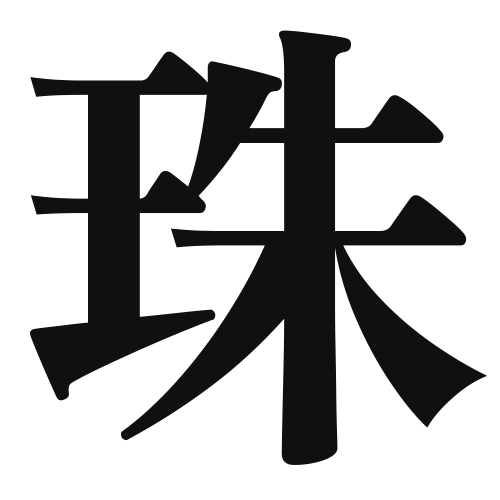1. Overview of Meaning
The kanji “珠” (pronounced “shu” or “tama”) means “pearl” or “gem.” It represents something precious and beautiful, often associated with value and rarity.
2. Formation and Radical
Formation of the Kanji: The kanji “珠” is a phonetic-ideographic character (形声文字). It combines the meaning of a jewel or bead with a phonetic component that suggests its pronunciation.
Radical: The radical for “珠” is “王” (meaning “king” or “jewel”), which emphasizes its association with preciousness.
3. Examples of Usage
Common Words and Phrases:
- 珠宝 (zhūbǎo) – jewelry
- 真珠 (しんじゅ, shinjyu) – genuine pearl
Example Sentences in Daily Conversation:
- このネックレスは真珠でできています。 (This necklace is made of pearls.)
- 彼女は珠のように美しいです。 (She is as beautiful as a gem.)
4. Synonyms and Antonyms
Similar Kanji:
- 宝 (ほう, hou) – treasure; while “珠” refers specifically to pearls or gems, “宝” encompasses a broader range of treasures.
Antonyms:
- 石 (いし, ishi) – stone; whereas “珠” signifies something precious, “石” refers to ordinary stones, lacking the value associated with gems.
5. Cultural and Historical Background
Relation to Japanese Culture: In Japan, pearls are highly valued and often used in traditional jewelry. They symbolize purity and elegance.
Proverbs and Idioms:
- 「珠のような心」 (tama no you na kokoro) – a heart like a jewel, meaning a pure and kind heart.
